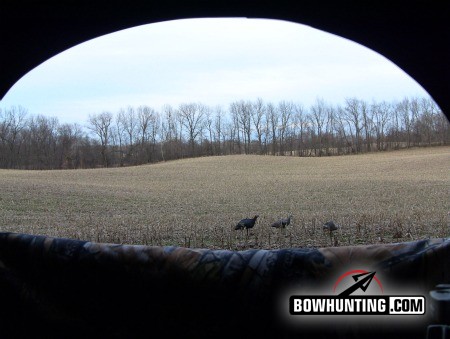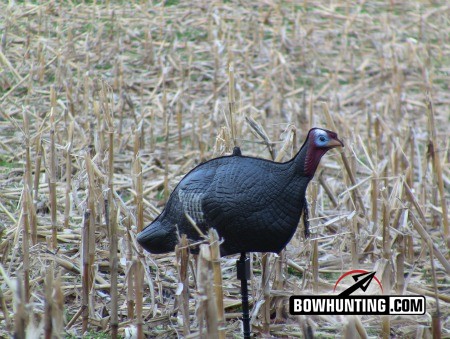LAST UPDATED: May 8th, 2015
The strutting tom crested the ridge with a fanfare deserving of a king. The afternoon sun shimmered on his fanned tail-feathers and his gobble echoed across the timber like an iron ball shot from a musket. It was the kind of moment that burns itself upon your memory, in such detail that still today I get chills recounting it. That old boss gobbler raised a racket, marching back and forth, staring down at me but never coming in to my calls. And why not, do you ask? Well good question, and I’ve asked myself this a time or two as well. The best I can figure is that it was due to the fact that he couldn’t see my decoys. That oh so important tool in our turkey hunting kit, decoys can make or break a hunt. And in this case they broke it. So may the first lesson I give you today be this. Make sure your decoys are not on the other side of a downed tree from the gobbler you’re trying to call in!
And now that my tale has led us to a piece of turkey decoying wisdom, it only seems right to follow that up with some more turkey decoying food for thought. So read on for my 4 super simple decoy tips for turkey hunters.
1. Keep Your Head Down: When it comes to setting up your decoys, I prefer to have all, or at least most of the decoys’ heads down. Most often, the only time you’ll see a flock of turkeys with all of their heads up is when they are alerted by some kind of danger. Don’t make an incoming turkey think there is something to worry about!
2. If You’re Broke, Bring A Lady: If you’re on a budget and can only afford one or two decoys, your best bet is a hen or two. With this set, no matter what time of year, you can count on it being effective at some level and you won’t run the risk of intimidating another gobbler.
3. Timing Is Everything: On the topic of intimidating gobblers, make sure you keep timing in mind when choosing decoys. During the early season a gobbler decoy can attract feisty toms, but in the late season it could very well have the opposite effect. Late season gobblers are more aware of the pecking order in the area and are more likely to shy away from other gobblers. At this time of year stick with hens or maybe hens with a single jake.
4. Assume The Position: If you are in fact using a tom or jake decoy, the direction you position them can be very important. When approaching another gobbler, an incoming tom will typically want to face the challenger head on. With this in mind, place your tom/jake decoy facing towards your blind. That way when he comes around to face the decoy, he’ll be turned away from you, allowing you to easily draw your bow!
With a little luck and these turkey decoying tips up your sleeve, you ought to have a great chance of coming home this spring with more than just an empty truck bed and stories of the one that got away! In fact, if you use decoys wisely, I can bet you’ll have more turkey fans on the wall and proper success stories to boot!







